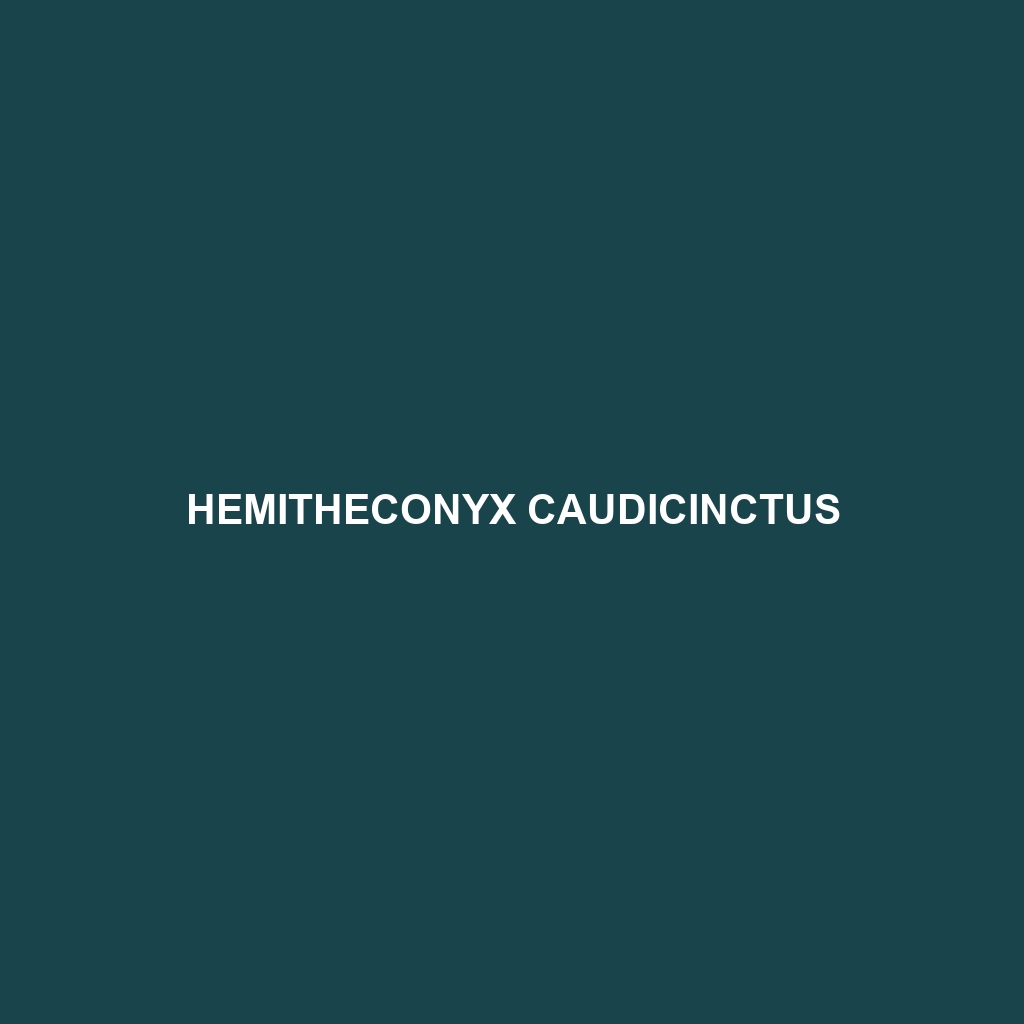Common Name
Hemitheconyx caudicinctus
Scientific Name
Hemitheconyx caudicinctus
Habitat
Hemitheconyx caudicinctus, commonly known as the African Fat-Tailed Gecko, primarily inhabits the arid regions of sub-Saharan Africa. This species is predominantly found in savannas and semi-desert environments where the climate varies from arid to semi-arid. They are often located in rocky and sandy substrates which provide them with ample hiding spots, ideal for their survival. The gecko is also commonly found in areas with sparse vegetation where they can blend in with their surroundings. Temperatures in this region can be extreme, but these reptiles have adapted well to thrive in such conditions, often taking refuge in burrows during the hottest parts of the day.
Physical Characteristics
The African Fat-Tailed Gecko exhibits distinctive physical traits that set it apart from other gecko species. Adults typically measure between 20 to 25 cm in length and weigh around 100 to 150 grams. Their body is robust with a notably fat tail, which serves as a fat storage reservoir during food scarcity. The coloration of Hemitheconyx caudicinctus varies from light tan to dark brown with unique patterns, including spots and bands that help camouflage them against the rocky environments they inhabit. Their skin is also smooth, with a slightly shining appearance that can reflect light, further aiding in their disguise from predators.
Behavior
Hemitheconyx caudicinctus is primarily nocturnal, exhibiting most of its activity during the night. These geckos are solitary and territorial, with males known to engage in displays of dominance. Their nighttime activities include hunting for food and engaging in mating rituals that involve visual displays and pheromone signals to attract females. Their keen eyesight allows them to spot prey and threats effectively in low-light conditions. During the day, these geckos take shelter in rock crevices or burrows to avoid the heat, making them experts at remaining concealed in their environment.
Diet
The diet of Hemitheconyx caudicinctus consists primarily of insects, which classifies them as insectivores. They feed on a variety of arthropods including crickets, mealworms, and roaches. Their hunting strategy involves stealth and ambush, allowing them to pounce on unsuspecting prey. In captivity, they can also be fed commercially available insects, ensuring they obtain the necessary nutrients for optimal health. The presence of their fat tails indicates their ability to store energy for times when food is less abundant, reflecting their adaptability in harsh habitats.
Reproduction
The reproductive cycle of Hemitheconyx caudicinctus typically occurs during the warmer months, which coincide with the rainy season in their natural environment. The females lay clutches of 2 to 3 eggs that they bury in warm, moist soil, an instinctual behavior meant to protect the eggs from predators and environmental extremes. The incubation period lasts about 60 to 90 days, after which the young geckos emerge fully formed and self-sufficient, ready to fend for themselves. Parental care is minimal post-hatching, as the young are left to navigate their own survival in the wild.
Conservation Status
As of the latest assessments, Hemitheconyx caudicinctus is categorized as a species of Least Concern according to the IUCN Red List. However, like many reptiles, they face threats from habitat destruction due to urbanization and agriculture. Conservation efforts include habitat preservation and protection measures to ensure that their natural environments remain intact. Education regarding the importance of reptiles in ecosystems can also help mitigate threats to their populations.
Interesting Facts
One unique aspect of Hemitheconyx caudicinctus is its ability to morph its body color slightly, allowing it to blend more effectively with its surroundings. It is also known for its docile nature, making it a popular choice in the exotic pet trade. Unlike many other geckos, the African Fat-Tailed Gecko does not have adhesive pads on its feet, but rather employs its strong claws to climb and navigate its habitat.
Role in Ecosystem
Hemitheconyx caudicinctus plays a significant role in its ecosystem as both a predator and prey. By controlling insect populations, these geckos contribute to the balance of their habitats. Additionally, they serve as a food source for larger predators such as birds of prey and snakes. The health of the African Fat-Tailed Gecko population can serve as an indicator of environmental changes, showcasing the interconnectedness of ecosystems and the importance of biodiversity.
